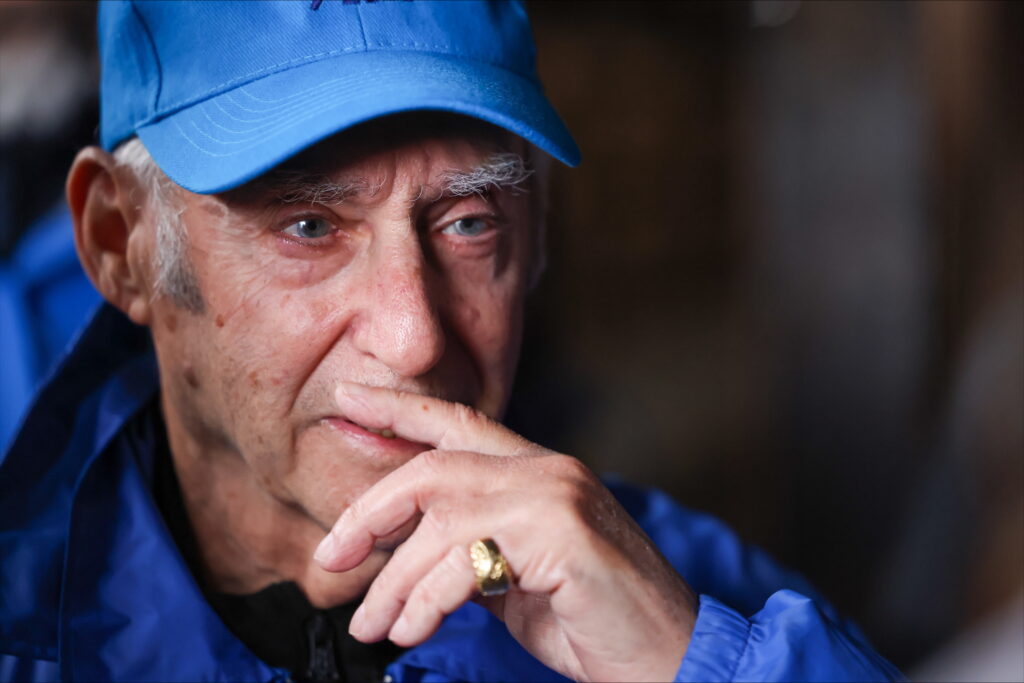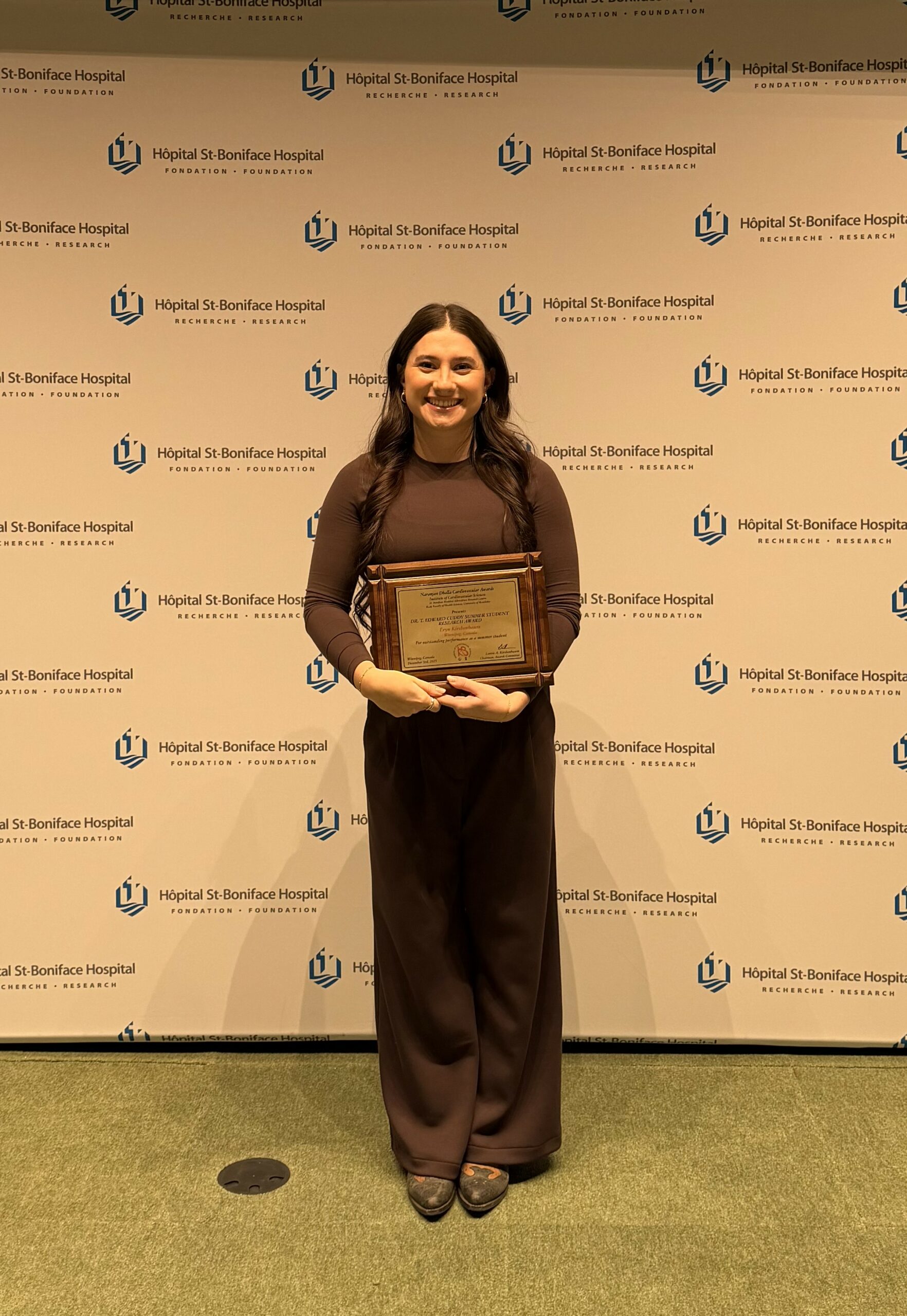Local News
Manitoba Legislature recognizes May as “Jewish Heritage Month”

By BERNIE BELLAN The Manitoba Legislature passed a motion unanimously on Tuesday, May 31 that recognizes May as “Jewish Heritage Month” in Manitoba.
In a press release describing the motion, it was noted that “Springfield-Richot MLA Ron Schuler was pleased to present Bill 240, The Jewish Heritage Month Act, which would make each year’s month of May Jewish Heritage Month.
The Bill was first read on Monday, May 30, and was debated on Tuesday May 31. Many prominent Jewish community leaders and organizations watched from the gallery.
“ ‘Jewish people have persevered throughout human history, and throughout Canadian history as well,’ said Schuler. ‘We will never forget the atrocities committed during the Second World War and the Holocaust. As Canadians, we need to learn from our past and do our part to ensure that these events never happen again.’
![]() Pictured in the above photo are: front row (l-r): Jon Gerrard, MLA, River Heights; Elaine Goldstine, CEO, Jewish Federation; Ron Shuler, MLA, Springfield-Ritchot (and presenter of the bill); Gustavo Zentner, President, Jewish Federation; Carol Duboff, board member, Jewish Federation; Andrew Micklefield, MLA, Rossmere (and seconder of the bill); Shelley Faintuch, former Community Relations Director, Jewish Federation; Haskel Greenfield, U of M Judaic Studies Program Coordinator
Pictured in the above photo are: front row (l-r): Jon Gerrard, MLA, River Heights; Elaine Goldstine, CEO, Jewish Federation; Ron Shuler, MLA, Springfield-Ritchot (and presenter of the bill); Gustavo Zentner, President, Jewish Federation; Carol Duboff, board member, Jewish Federation; Andrew Micklefield, MLA, Rossmere (and seconder of the bill); Shelley Faintuch, former Community Relations Director, Jewish Federation; Haskel Greenfield, U of M Judaic Studies Program Coordinator
second row (l-r): Adam Levy, Communications & Public Relations Director, Jewish Federation; Belle Jarniewski, Executive Director, Jewish Heritage Centre of Western Canada; (behind Belle) Patrick Elazar, Member, Jewish Federation board; Stan Carbone, Director of Programs & Exhibits, JHCWC; Ruth Ashrafi, B’nai Brith Manitoba Regional Director; John Diamond, CEO, Jewish Foundation of Manitoba;
third row, (l-r): Gray Academy students Emery Rosen, Max Eilberg; Adriana Glickman, Winnipeg Program Coordinator, B’nai Brith; Gray Academy student Eden Avimelek; Judi Price-Rosen, Gray Academy staff representative
Following is the text of the act:
WHEREAS Manitoba is home to a strong and vibrant Jewish community;
AND WHEREAS Manitoba’s Jewish community is the fifth-largest Jewish population in Canada;
AND WHEREAS Manitoba’s Jewish community reflects the vibrant history and diverse culture of the Jewish people;
AND WHEREAS the Jewish community has made significant contributions to the growth and prosperity of Manitoba while overcoming tremendous obstacles;
AND WHEREAS the month of May is meaningful for the Jewish community;
AND WHEREAS celebrating the Jewish community in Manitoba will provide an opportunity to educate future generations about the inspirational role that Jewish Manitobans have played and continue to play across Manitoba;
THEREFORE HER MAJESTY, by and with the advice and consent of the Legislative Assembly of Manitoba, enacts as follows:
Jewish Heritage Month
In each year, the month of May is to be known throughout Manitoba as Jewish Heritage Month.
Following passage of the act, various representatives of the Jewish community,along with some students from Gray Academy, met with members of the provincial government, including MLA Ron Schuler and MLA Andrew Micklefield.
Jewish Federation President Gustavo Zentner then read remarks describing the history of the Jewish community in Manitoba.
Good morning,
My name is Gustavo Zentner, and I am the President of the Jewish Federation of Winnipeg, the representative body of Manitoba’s Jewish community.
I would like to begin by extending sincere thanks on behalf of our community to The Honourable Andrew Smith, Minister of Sport, Culture, and Heritage, as well as The Honourable Ron Schuler, for inviting us here today to participate in today’s dedication.
We applaud the Province of Manitoba for the introduction of the Jewish Heritage Month Act, declaring May as Jewish Heritage Month in Manitoba. The Federal designation of the month of May as Canadian Jewish Heritage Month was passed unanimously by Parliament, and since then, other provinces such as Ontario and British Columbia have followed suit.
I wish to recognize the work and leadership displayed by Senator Linda Frum for her work in getting the Canadian Jewish Heritage Month Act passed in 2018. I had an opportunity to meet with Senator Frum last week and was particularly humbled to reflect on the importance of Jewish Heritage Month and its implications for Canada.
We are pleased to count Manitoba among the provinces that celebrate the contributions of its Jewish citizens, who have a long and storied history in this province.
It is from that position of strength, community building, and positive engagement that I bring remarks to mark this momentous occasion. Let me be clear: the Jewish community is joined by many other ethnic groups and faith-based organizations that have made significant contributions to our province.
Deeply rooted in Jewish values, we celebrate and promote inclusion, equality, and diversity as reflected by the Jewish community delegation accompanying me here today.
Our Jewish community has played a leading role in the development of this province and, throughout our history here, has partnered with Manitobans and others to make this a prosperous and welcoming province for all.
In 1877-1878 the first known Jewish residents of Manitoba arrived. By the dawn of the following decade, more Jewish immigrants began to arrive in Manitoba, establishing themselves as merchants, peddlers, and traders. By 1881, there were 33 Jewish families in Manitoba, and the total Jewish population numbered about one hundred.
Early settlers of Jewish descent had a profound impact on our business community. I reflect on the life of Max Goldstine, a Hudson’s Bay factor at Fort Qu’Appelle during the Riel Rebellion. He moved to Winnipeg in 1880, married Jennie Cohn from Lexington, Kentucky and in 1883 established a clothing and general merchandise business, The Manitoba Clothing Company. One full century later, his great-grandson, Dr. Ian Goldstine, my friend, led the Manitoba Medical Association, now Doctors Manitoba, in 1993, and led the Jewish community as President from 2001-2003.
In the early 1880s, Alexander II, the Czar of Russia, was assassinated in St. Petersburg. The Russian government quickly pointed the finger at the Jews of Russia for his assassination. This caused its population to revolt against Russia’s Jewish population, who began to face unprecedented antisemitism through violent antisemitic attacks known as pogroms.
This caused a mass exodus of Jews from Russia. Seeking a land of opportunity free of antisemitism, many of them chose Manitoba as their new home, leading to the tripling of the Jewish population here to over 300 by 1882.
All was not bright for Jews once they arrived here, however, as many struggled to adapt to new cultural, political, and socio-economic conditions.
However, they persevered, and by the late 1880s land was assigned to Jewish farm settlers within Manitoba, in locations such as Niverville, Bender Hamlet, and Camper. Closer to Winnipeg, several Jewish farmers set up dairy farms.
In the decades that followed, rampant antisemitism began to tear through Europe, which led to the influx of Jewish immigrants to Manitoba continuing. By the turn of the century, the Jewish population here had increased to just over 1,500. By 1921, it had grown to over 16,000.
Standing here with you today is a privilege I do not take for granted, and I believe it is only fitting to reflect on some of the individuals who have built the core of our community and province.
A recently published book called “Healing Lives, A Century of Manitoba Jewish Physicians,” narrates the contributions made by Jewish doctors to our province. It was in Portage La Prairie that, in 1883, Jewish doctors started to engage in a variety of medical practices, primarily internal and respiratory, led by Dr. Cherniack. With growing cases of tuberculosis, Dr. Earl Hershfield led a practice in Northern and Aboriginal communities.
It is fascinating to reflect on the fact that, despite the ‘numerus clausa’ in place at that time – to ensure that the “right people” practiced medicine, members of our community continued with their commitment to build community and serve to the greatest extent possible…such as Dr. Ruven Lyons, who retired at the age of 82 from his obstetrics practice, and who also served as President of Shaarey Zedek Congregation.
That commitment was further carried on by Dr. Edward Lyons, whose leadership has included his role as President of the Canadian Association of Radiology and the International Society of Radiology and Ultrasound.
This is reflective of how Manitobans are in having an impact at national and international levels. Dr. Lyons, my friend and mentor, was also a former President of Congregation Shaarey Zedek and a Past President of the Federation.
Members of our community have also played vital roles in the judicial system, advocating for the rule of law, and occupying many notable positions within the judicial system in Manitoba.
It was in the decades that followed the first migration of Jews to Manitoba that Jewish people began to make an indelible mark on the historical fabric of Manitoba, through their increased participation in social, business, and political spheres.
Unfortunately, partly as a byproduct of their further integration into society, many experienced antisemitism. As late as the 1930s, Jews were excluded from private clubs and popular vacation spots here in Manitoba.
Undeterred, they continued to flourish. In the early 1960s, the Jewish population of Manitoba peaked at 21,000 and then began to decline. In 1990 Winnipeg’s Jewish population had fallen to less than 16,000 due to an aging population along with younger members of the community leaving to find opportunities in larger Canadian cities.
That is when leaders of our community took charge and undertook a series of actions to reverse that worrisome trend. The first was the opening of the Asper Jewish Community Campus in September 1997 – which still serves as the beating heart of our community to this day. Our Federation’s GrowWinnipeg initiative followed shortly thereafter, focuseing on the retention of our local Jewish population, and active recruitment of Jewish immigrants from all over the world.
Key to these efforts was outreach to the Jewish communities of Latin America, especially Argentina. In 1998, their Honours, Gary and Janice Filmon led efforts to open Manitoba to members of the Argentinean Jewish community, who were encouraged to consider moving to Manitoba and starting new lives here.
As a result, our Federation organized a program to actively recruit Jewish families from South America, which was quite successful in our revitalization efforts. Over the next several years, close to 500 South American Jewish families moved to Winnipeg, where they became a prosperous contingent of our local population. I am proud to say that I am here because of the initiative shown by certain individuals and humbled to play a leadership role standing on the shoulders of remarkable Manitobans.
For nearly 150 years, Jewish people have contributed to the social, political, and cultural vibrancy of Manitoba. Notably, members of our community’s leadership have paved the way to enable our province to reach international heights while building a strong community in Manitoba and across Canada. The late Izzy Asper was one of our leaders who played a prominent role in government, leading the Manitoba Liberal Party, developing a strong legal and business practice, and becoming the cornerstone of philanthropy in our province by establishing the Asper Foundation. One of his most accomplished legacies is the Canadian Museum for Human Rights, which he envisioned by drawing on Jewish values and a commitment to Tikkun- Olam, a Hebrew phrase meaning ‘repairing the world’.
With us today, we are surrounded by representatives of the Asper Jewish Community Campus, home of most of Manitoba’s Jewish institutions.
Our community’s commitment to heritage is highlighted by the Jewish Heritage Centre of Western Canada. Our sports and experiential Jewish life are enabled by the beautiful and vibrant Rady Jewish Community Centre; and our youth camps, B’nai Brith Camp and Camp Massad, leading our experiential Judaism and delivering youth programs in Manitoba.
The Jewish Foundation of Manitoba, established in 1964, has surpassed $150 million in endowments, and plays a key role in enabling and sponsoring activities within and outside the Jewish community. I am proud to serve on its Board of Directors and can see first-hand the impact its contributions make.
The Jewish Federation of Winnipeg’s mandate is to enable a secure, connected, and safe community for all. We celebrate this month and look to the future by ensuring Jewish education, as exemplified by the Gray Academy of Jewish Education and other Hebrew and Jewish programs at other schools across our city, providing formal education for generations to come.
We are vigilant in monitoring the rise of antisemitism across Canada; I recognize the work done by B’nai B’rith Canada to eradicate racism and hatred.
Our clergy and others not only serve roles in our Jewish synagogues, they also engage in cross-communal and inter-faith activities, contributing to a prosperous and connected province, based on Jewish values and deep connections with other communities in Manitoba. I recognize the work done by the Manitoba Council of Rabbis with other faith groups in our province.
As I stand here today, I can’t help but wonder what those first Jewish immigrants who arrived here in Manitoba would think of the active, thriving community that we have built – and what they would think of us, standing here today, celebrating the contributions of Jewish people in the Province of Manitoba, in partnership with our elected officials, at the invitation of the Government of Manitoba to the Manitoba Legislative Building. Today, The Manitoba Government has unanimously passed the adoption of Bill 240, The Jewish Heritage Month Act.
In this month of May, we recognize, remember, and reflect on the horrors of the Holocaust -Yom HaShoah. We remember and honour the Israeli soldiers and those who have fallen in defense of the State of Israel and the Jewish world (Hebrew: Tzvah’ Haganat Israel), the Israel Defense Forces, or IDF.
And we celebrate the great State of Israel, a sovereign democracy, home of the Jewish people wherever they reside… a country committed to supporting humanity around the world, (Hebrew: Am Israel Chai; Eretz Israel Chai) The People of Israel Live, The State of Israel Lives.
Local News
March of the Living 2023 participants form Taste of Hope project to help honour the memory of Holocaust survivor Alex Buckman

By BERNIE BELLAN The March of the Living is an annual two-week international educational program that brings thousands of students and adults to Poland and Israel to study the Holocaust, Jewish history, and the rise of the State of Israel. Founded in 1988, it features a 3-kilometer silent walk from Auschwitz to Birkenau on Yom HaShoah (Holocaust Remembrance Day).
Attendees on the march are accompanied by adults, some of whom themselves have been Holocaust survivors.
Following the week in Poland, participants travel to Israel to observe Yom HaZikaron (Israel’s Memorial Day) and celebrate Yom HaAtzmaut (Israel’s Independence Day), marking a journey from darkness to life.
For many years the coordinator of the march in Winnipeg was Roberta Malam, working on behalf of the Jewish Federation of Winnipeg. More recently Abby Flackman filled that role, and now the person in charge is Lindsey Kerr.
Since its inception 37 years ago the March of the Living has become a rite of passage for many young Winnipeg Jews who have been able to participate as an organized group from Winnipeg and combine visits to the death camp at Auschwitz-Birkenau in Poland with the subsequent trip to Israel.
Then – the Covid pandemic hit – in 2020, and the March of the Living was put on hold for two years – in 2020 and 2021.
In 2022, the March of the Living resumed, but there was no organized contingent from Winnipeg participating. (There may have been some Winnipeggers who did go on the march that year, but if there were any they would have been part of a general Canadian group since there was no Winnipeg coordinator that year.)
In 2023, however, once again a very large contingent of young Canadian Jews – 51 altogether, of whom approximately two-thirds were from Winnipeg, went on that year’s March of the Living. That particular march was memorable for many reasons, including the fact it was the last full march since 2019 and was to remain the last march to have an organized Winnipeg contingent in the past six years as the years 2024 and 2025 were interrupted by the war in Gaza. (There were smaller marches held in 2024 and 2025, but again there was no organized contingent from Winnipeg.)
Recently, we were contacted by one of the participants of that 2023 march, Ethan Levene, who asked us whether we’d be interested in running what turned out be a very poignant story about one particular aspect of that 2023 March of the Living.
Here is what Ethan wrote:
“In April 2023, the Coast to Coast Canadian delegation of March of the Living was privileged to travel with Holocaust survivor Alex Buckman (z”l). March of the Living is a Holocaust education trip that allows participants to visit and bear witness to the sites of the Holocaust. Unfortunately, while sharing his story in Poland, Alex passed away. However, the impact he left on us students was immeasurable.

“While speaking to us in Warsaw, Alex told us the story of his Aunt Becky’s gâteau à l’orange (orange cake). While in Ravensbruck concentration camp, his aunt managed to write down this recipe. After his parents’ murder, his Aunt Becky went on to raise Alex after surviving. In addition to sharing his story, Alex tasked us with baking the cake with family and friends.
“Out of this, a group of alumni from our trip have created this project: ‘A Taste of Hope.’ On February 1st, university students from over 5 universities across Canada will come together to bake the gâteau à l’orange and hear Alex’s story. Proceeds from the event and this fundraising page will support the World Federation of Jewish Holocaust Survivors and Descendants. Alex was heavily involved with this organization, whose mission is to both create community for Holocaust survivors and their descendants and educate about the Holocaust to help fight against antisemitism and all forms of bigotry and hate.
“Here is information from our fundraising page for the event – ‘A Taste of Hope’: Fundraising for A Taste of Hope.
Ethan added that “it’s completely student led, all by alumni from our 2023 trip attending university at these various locations across Canada; Winnipeg, London, Kingston, Montreal.”
He also added: “Follow us on instagram@tastehope.“
Here is a link to a CBC story about Alex Buckman: Alex Buckman story
In a subsequent email Ethan gave the names of Winnipeggers who are involved in A Taste of Hope: Ethan Levene (studies at McGill), Zahra Slutchuk, Alex Stoller (studies at Queens), Coby Samphir, Izzy Silver (studies at Waterloo).
He also added names of others who are involved in the project: Jessie Ages, Anneke Goodwin, Lilah Silver, Ella Pertman, Ellie Vogel, and Talia Cherun.
To find out more about March of the Living in Winnipeg go to: March of the Living
Local News
Young Researcher Eryn Kirshenbaum 2025 recipient of the Institute of Cardiovascular Sciences prestigious Dr. T. Edward Cuddy Award

By MYRON LOVE Fifth year University of Manitoba Faculty of Sciences Microbiology student Eryn Kirshenbaum is this year’s recipient of the Dr. T. Edward Cuddy Student Award in recognition of her excellence in research under the supervision of Dr. Inna Rabinovich-Nikitin, Assistant Professor of Physiology and Pathophysiology, University of Manitoba and Principle Investigator in Women’s Heart Health Research at the Institute of Cardiovascular Sciences at the St. Boniface Hospital Albrechtsen Research Centre.
When asked for her reaction to learning she was the 2025 recipient of the student award, Kirshenbaum says “I was so honoured, humbled and excited to have been nominated and then chosen as the recipient out of many well deserving students.”
Rabinovich-Nikitin, Kirshenbaum’s mentor, says “This is Eryn’s third year working in my lab and I am incredibly proud of her for winning the Dr. T. Edward Cuddy Research Award.” She adds: “It is a truly deserved honour. Since joining my laboratory in 2023, Eryn has shown an exceptional combination of technical skill, intellectual curiosity, and professional maturity, becoming an integral contributor to our research on women’s heart health, an area of growing scientific importance that demands both rigorous methodology and a strong understanding of sex-based differences in heart disease.
“Not only has Eryn provided invaluable experimental support, but she has also taken on a leadership role in training new students and has demonstrated a strong commitment to collaboration and mentorship.”
In return, Kirshenbaum notes that she has “learned a lot from Dr. Rabinovich-Nikitin. She is a great mentor and I look forward to learning and growing even more under her leadership”.
The T. Edward Cuddy Award is one of 12 awards presented annually by the Institute of Cardiovascular Sciences in partnership with the University of Manitoba.
The 27th Annual Institute of Cardiovascular Naranjan Dhalla Awards were held on December 2nd and 3rd as part of a two-day conference comprised of a scientific forum and awards ceremony. The awards celebrate the leadership of individuals who have profoundly influenced the advancement of cardiovascular research, medicine and health education, including, in previous years, Nobel Prize winners and Gairdner Award Scholars. The Institute of Cardiovascular Sciences Gold Medal was awarded to Dr. Stanley Nattel, Director of the Montreal Heart Institute for his outstanding contributions to advancements in cardiac arrythmias and patient care.
Eryn Kirshenbaum, the daughter of Barry and Kim Kirshenbaum, says she was always interested in understanding the functioning’s of the human body, in particular the heart, which has fit with her desire to pursue a career in medicine and possibly continued heart health research.
A graduate of the Hebrew Bilingual program at Brock Corydon Elementary School, Ecole River Heights, and Kelvin High School French Immersion, Eryn says that she has always been interested in science, particularly cardiology. She reports that she has assisted as co-author on 5 research papers, including one where she was the primary author, focusing on women’s heart health and how heart disease affects women differently than men. That paper also investigated the connection between disrupted circadian rhythms and heart disease, specifically related to individuals with irregular sleep patterns, such as shift workers.
Eryn notes that, in addition to her university studies and research activities, she works part time as a Medical First Responder with St. John Ambulance – an activity which complements her medical research. “With St. John Ambulance, I have had calls dealing with the early stages of heart attacks and strokes as well as basic first aid,” she notes.
Readers might also run into Eryn at many Jewish celebrations such as Yom Ha’atzmaut, where she helps her dad with the family entertainment business.
While her ultimate goal, she says, is to practice medicine, she adds that she is really enjoying doing research.
Local News
Young entrepreneur Noah Palansky and partner Jordan Davis are the first Winnipeggers to crack Forbes Magazine’s “top 30 Under 30” list

By MYRON LOVE From a very young age, Noah Palansky has demonstrated initiative and leadership. I first met and interviewed Palansky in 2011 at a low point in his life. His mother, Naomi Palansky, had sadly passed away at a young age. The then 12-year-old channeled his mourning into action. With his younger sister, Lexi, by his side – and the support of his father, Bruce – the preteen entered a team in the annual CancerCare Manitoba Foundation Challenge for Life. For the next few years, Palansky’s teams – under the banner, “Kids Count” – raised thousands of dollars for cancer researched.
Fast forward to 2019. Palansky was by then a young adult with a new initiative. The year before, he and a couple of friends had entered a potential business proposal in a competition sponsored by Winnipeg-based North Forge, Canada’s only start up incubator and fabrication lab, and won the top prize.
In that 2019 story, the young entrepreneur recalled how he came up with idea for his new business – TAIV (the AI stands for artificial intelligence). In the spring of 2018, he recounted, at the height of the Winnipeg Jets playoff run, he and his girlfriend were watching the game on a big screen while having drinks in a restaurant when an ad appeared onscreen promoting a rival restaurant and advertising the same drink he was imbibing – at a lower price.
“That ad gave me the germ of an idea,” he said in that earlier interview. “I immediately spoke to the restaurant manager and asked how he felt about the ad,” he recalls. “He was not pleased.”
That germ of an idea has developed into a highly successful new business venture. The idea that was put into practice has landed Palansky and his partner, Jordan Davis, on Forbes Magazine’s 30 Under 30 list in the Marketing and Advertising category. The duo are the first Winnipeg-based entrepreneurs to have received this honour.
“It came as a complete surprise,” Palansky responds. “We had no advance notice that we were even being considered for this recognition.”
Since TAIV officially launched in 2021, the company – still based in Winnipeg – has grown to a workforce of about 80 – most of whom are based here. Palansky notes that TAIV also has sales offices in New York, Chicago and Los Angeles.
In the past four years, TAIV has built a presence in nearly 5,000 venues across the United States. The company works with brands like Coke, Pepsi, Netflix, T-Mobile, FanDuel, Fox, and United Airlines.
“The way this works,” Palansky explained to this writer in 2019, “ is that if you are in Boston Pizza, for example, watching a Jets game and a commercial comes on, our software will switch the commercial to an ad for Boston Pizza.
“We make a little box that sits between your cable box and the TV. Our box can detect when a commercial is coming on and switch the ad out for one promoting the restaurant or store the box is in.”
For larger enterprises, Palansky notes, TAIV produces a web app that allows the company to switch its own in-house ads for the ads that would be appearing on screen.
In a statement by North Force celebrating Palansky and Davis’ achievement, Palansky is quoted as saying that “the Forbes achievement offered a rare moment to pause and reflect.
“There are very few moments where a third party reaches out and says, ‘We’ve noticed what you did, and we think it’s awesome.’ This felt like one of those rare moments.”
The North Forge report also sees the recognition as a win for the community.
“I wish we had more Winnipeg entrepreneurs on the global stage because it’s really good for the local ecosystem,” Palansky is quoted as saying. “I’m trying to do what I can to help others get off the ground.”
Palansky and Davis are looking forward to going to Phoenix in April for the official presentation.
He adds that TAIV continues expanding across North America, strengthening partnerships, and onboarding advertisers as the network grows. For local venues or businesses interested in installing TAIV or exploring advertising opportunities, the company welcomes inquiries at hello@taiv.tv.

